The launch of Elon Musk’s Starlink Satellite Internet Constellation (operated by SpaceX) is pretty exciting news. Could the hunt for 100% reliable mobile wifi be over? Is Starlink the portable Wifi device we’ve been dreaming of? Maybe–take it from one nomad who adopted Starlink internet for van life.
When I learned that my full-time vanlife friend, Sierra (who runs the vanlife and trail running blog, Sierra’s Traverse) got Starlink internet to help keep her working from the road, I asked if she would do a Q&A about her experience using Starlink so far. Read on to learn about her experience!
Table of Contents
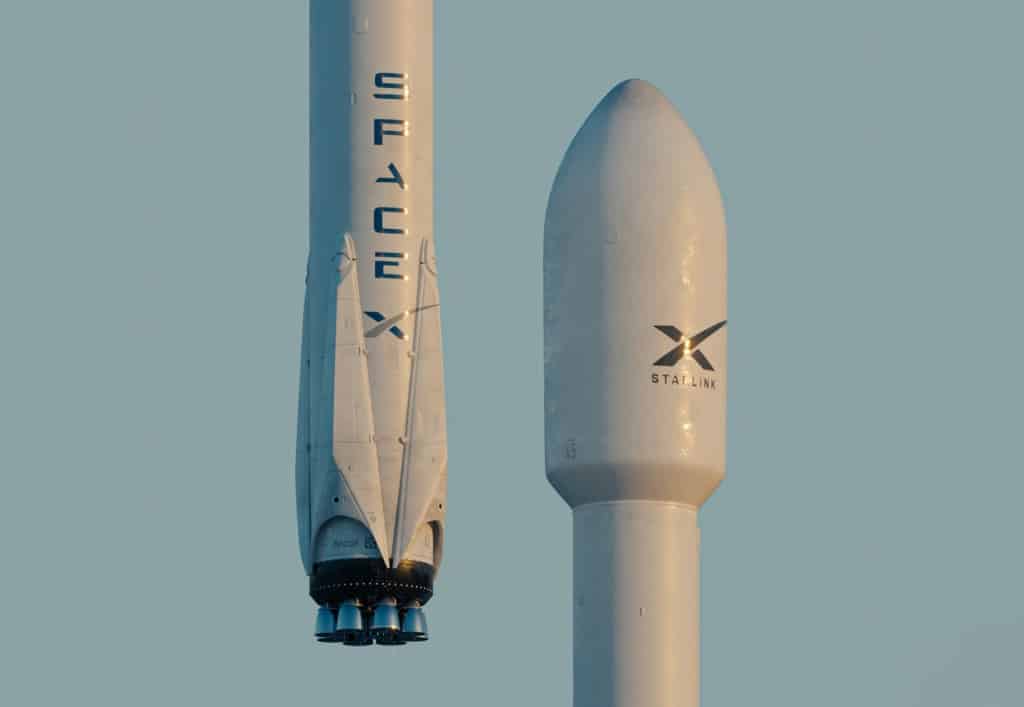
This is a Q&A where all questions are mine and all responses are from Sierra Eberly.
Why did you decide to try Starlink?
UPDATE: Since writing this article, Starlink now offers portable wifi for RVers, vanlifers and road travelers. I have updated some questions (i.e. if Starlink is portable) to reflect the new device made for road travelers.
——————–
Here is Sierra’s original response:
First, I want to be clear that Starlink hasn’t advertised itself as internet for nomads because it hasn’t officially opened up roaming on their satellites.
This all started from a tweet response from Elon Musk. There were rumors that Starlink enabled roaming in the US, so someone took their Starlink out in the boondocks, and it worked. The news spread fast. And here I am.
Starlink connects to the internet via satellite, not cellular service. As a full-time nomad, I’m often boondocked in areas with limited or no cell service.
Today I’m parked in a spot with very slow, unusable cell service (even with my WeBoost!), but Starlink is bringing me 100+Mps internet download speeds. This is a game-changer for me since I own my own business (Boondock Consulting) and need connectivity to communicate with clients.
Is Starlink portable?
UPDATE: Starlink’s new portable wifi option for road travelers is called the Flat High Performance Starlink.
It’s important to note that Starlink’s new portable device is actually bigger in size than the residential Standard device. The main difference is that the portable device works while you’re driving, whereas the standard device won’t. The portable device is also more expensive, with a monthly subscription cost that’s $25 more than the standard cost (see below for more pricing details).
Flat High Performance (Portable) Device Specs
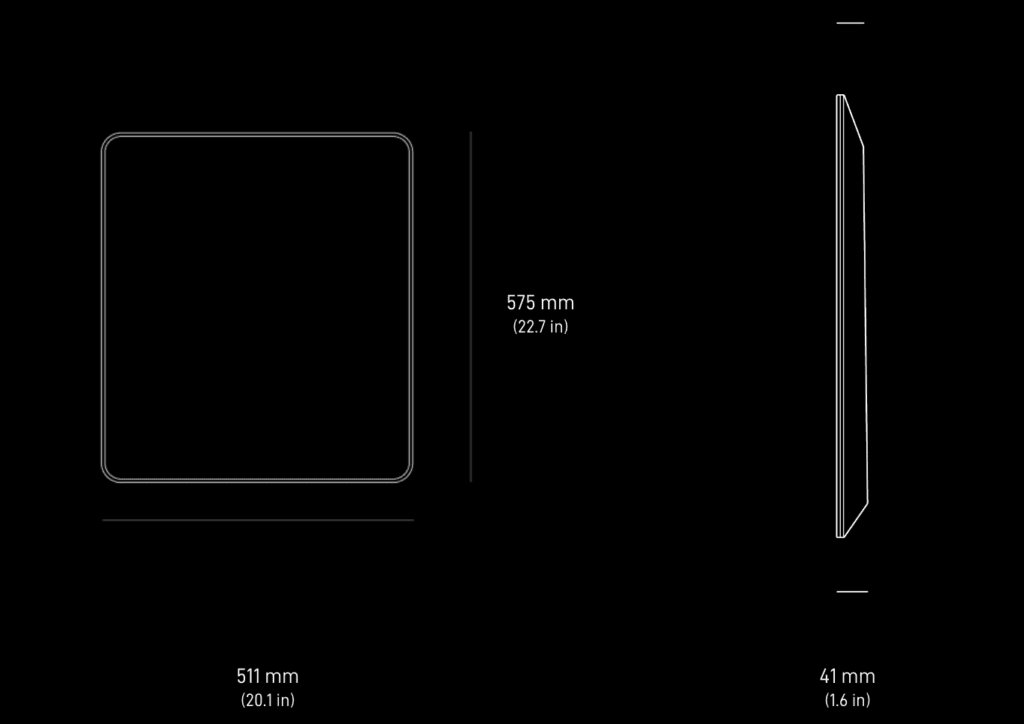
The length and width of the portable device comes in at 22.7 in. (575mm) x 20.1 in. (511mm).
The portable Flat High Performance device costs $135/mo with a one-time device fee of $599.
Standard (Residential) Device Specs
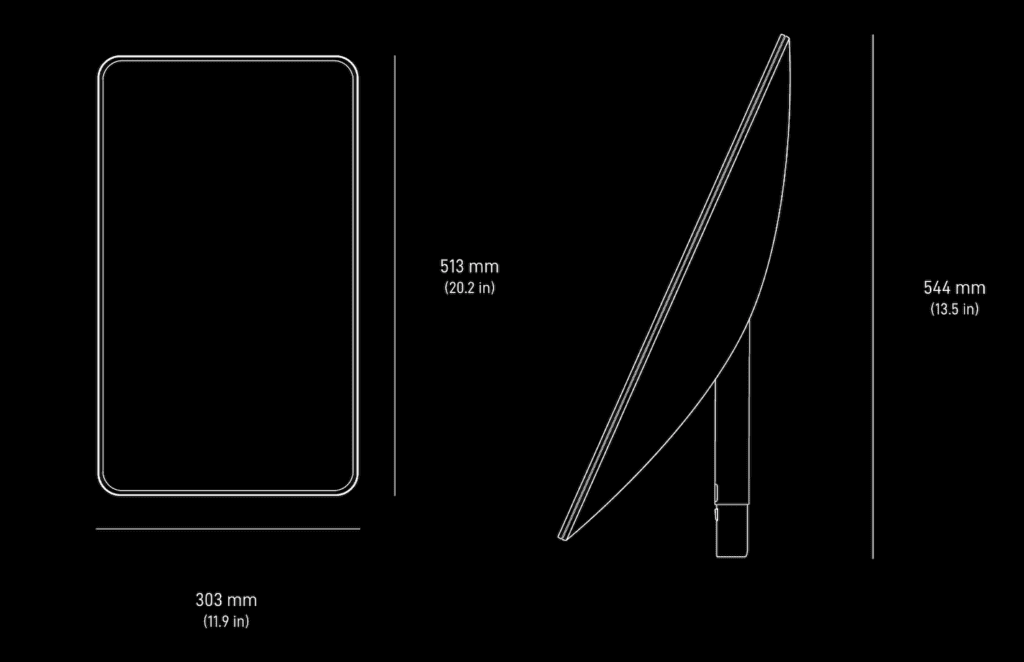
The length and width of the stationary, residential device comes in at 20.2 in. (513 mm) x 11.9 in. (303 mm).
The Standard Starlink device costs $110/mo with a one-time device fee of $599.
*********
Sierra uses the residential device (because the portable device wasn’t created before she bought Starlink).
Although she can’t use her Starlink while driving, her device takes up less space in her van and she is paying less for her monthly subscription.
As Sierra says:
The [standard] Starlink device has been engineered to withstand 100mph wind gusts when affixed to a building, but it has NOT been designed for being bounced around on a vehicle for hours on end. I personally would be wary to mount my Starlink dish on my van to use while driving. However, I can see how this is a game changer for those who might be a passenger in a vehicle, now having the ability to work while the driver is… driving!
Which Starlink package do you have?
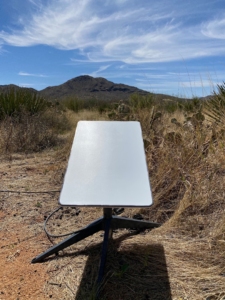
The subscription just increased to $110/mo. The plan includes unlimited satellite use and no throttling service after a set amount of data is used. The plan states service is only guaranteed at your service address. I am currently 1200 miles from my service address, and Starlink is working. Shhhhh, don’t tell anyone!
How did you get Starlink delivered to your van?
Starlink ships all startup kits via FedEx. I found a FedEx hold location near where I was boondocking and had it shipped there for me to pick up.
I wasn’t sure how soon the kit would ship, but you can re-route your packages from FedEx to another hold facility if needed. This usually delays delivery, but at least you don’t have to worry about waiting around a spot for a month for a package to be delivered.
How did you set up Starlink?
I couldn’t believe how easy it was to set up the Starlink dish!
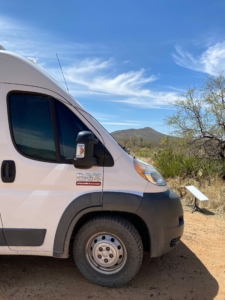
You set up your account via an app, and once you log in, the dish powers up and starts searching for satellite signal. The dish rotates on its base as it’s searching—mine connected in about 15 minutes. I’ve heard from some people it can take up to two days to connect the first time it’s plugged in. I was lucky!
Do you think Starlink's price point is reasonable?
At $110/mo, for me, absolutely. But you need to factor in the one-time initial fee of $599 for the equipment plus first-month payment. I was paying nearly $250/month on high-speed hotspots that would throttle me out after 30G of data was consumed. At the time, I had a lot of video conferencing for work, so I used a LOT of data.
Even with all that data, I still couldn’t update my laptop or phone, backup files, or upload photos to the cloud. With Starlink, I can keep everything up to date, just like I used to when I lived in an apartment! I cut back on my cellular plans, actually lowering my monthly “internet” bill.
If you don’t need connectivity or do all of your uploads/updates in coffee shops, this might not be worth the cost to you. I never work in coffee shops, so am 100% responsible for providing my own internet.
How long have you been using Starlink?
Only two weeks! This is a brand new thing, and there’s no guarantee that roaming service will continue long-term. I was willing to take the risk. So far, so good! I know someone who has been using theirs for a month all around the Southwest.
Are you using Starlink in conjunction with other WiFi devices?
If I were stationary and not living in a van full time, it would cover all my needs. But, I live in a van full time, so I will be keeping one mobile hotspot with 50G of data for times that Starlink may not work.
Starlink needs an open sky to connect to satellites. There will be times that I’m under the cover of a tree canopy or in areas that Starlink may not have coverage.
Overall, what do you think of Starlink's performance so far?
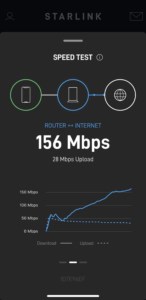
- This is not a mobile device. It’s made to be mounted on a sticks and bricks roof. But, with the dish only being about 20 pounds and 12”x20”x20”, it is easily “movable”. The dish does detach form the base, but it does not fold/collapse, so it’s still quite bulky and will take up a few square feet of precious space when stored.
- The current dish is NOT made to be mounted on a moving vehicle. I’ve heard of some people making mounts and setting them up, but I will not be mounting mine on my van with the bouncy roads I drive on.
- A router goes inside that is connected to the same power cord as the satellite. So you end up with power cords that you will have to figure out how to run through your vehicle without causing issues.
The dish and router pulls about 5amps of power consistently. That’s a lot for a consistent draw. I’ve noticed a difference in my battery recharge/use rate, so be sure to monitor usage and learn what the additional power use means to your specific setup.
- There WILL be places where Starlink won’t work. Either due to no satellite coverage in the area yet or something blocking signal, like tree branches. That’s just science.
- Upload speeds are still slow in many areas, even when download speeds are over 100Mps. Since we’re literally sending and receiving data back and forth TO SPACE, it makes sense. Remember that if you ever get frustrated with connection speeds.
Pros and cons, specific to living in a van?
Pro:
Having the ability to use high-speed, reliable internet in the middle of nowhere is mind-blowing.
Con:
Rather bulky to store, set up and put away, since it technically isn’t portable.
Until I find a better solution, I have to run the Starlink dish (with the power cord connected) through my passenger window and leave my window cracked for the power cord. Then I set up the Starlink dish on its base out in the widest open area I can. The power cord is very long, so you’ll have many options for dish placement.
Also, the power cord is GRAY and not highly visible, so if you have people or dogs walking around your campsite, make sure it’s not going to trip anyone. I have to set up my Starlink dish far enough away from the van, so Snow (my dog) doesn’t get tangled around the dish when he’s tied up.
Can Starlink work with weak or no cell signal?
You can have Starlink service in some areas where there is no cell service because Starlink works off of satellite signal and has nothing to do with cell service.
Cell service is completely irrelevant to Starlink’s functionality. Starlink’s performance solely depends on whether Starlink can connect to one of the deployed SpaceX satellites orbiting the earth.
Summing It Up
I personally would highly recommend getting a Starlink kit if it makes sense for your internet connectivity needs, and you can afford the initial cost (about $600).
If you’re a city dweller or don’t work a job that requires a lot of data upload/download, there are plenty of other options that are more affordable, convenient, and will meet your needs just fine.
Thank you, Sierra, for taking the time to answer these Starlink questions! Check out her nomadic adventures on Instagram at @SierrasTraverse!
Save This on Pinterest
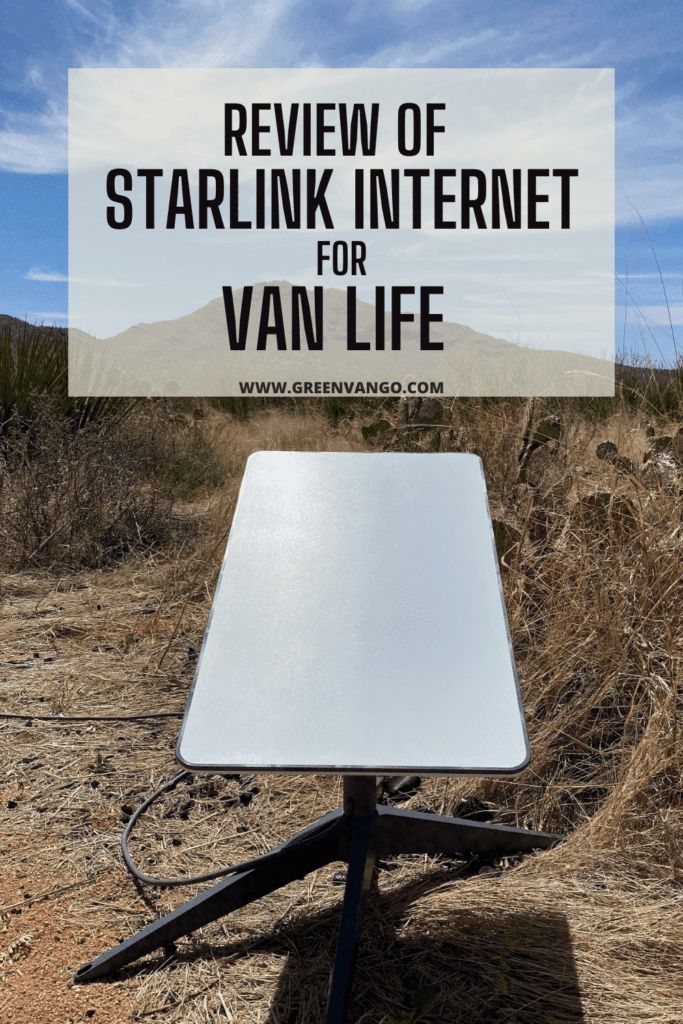
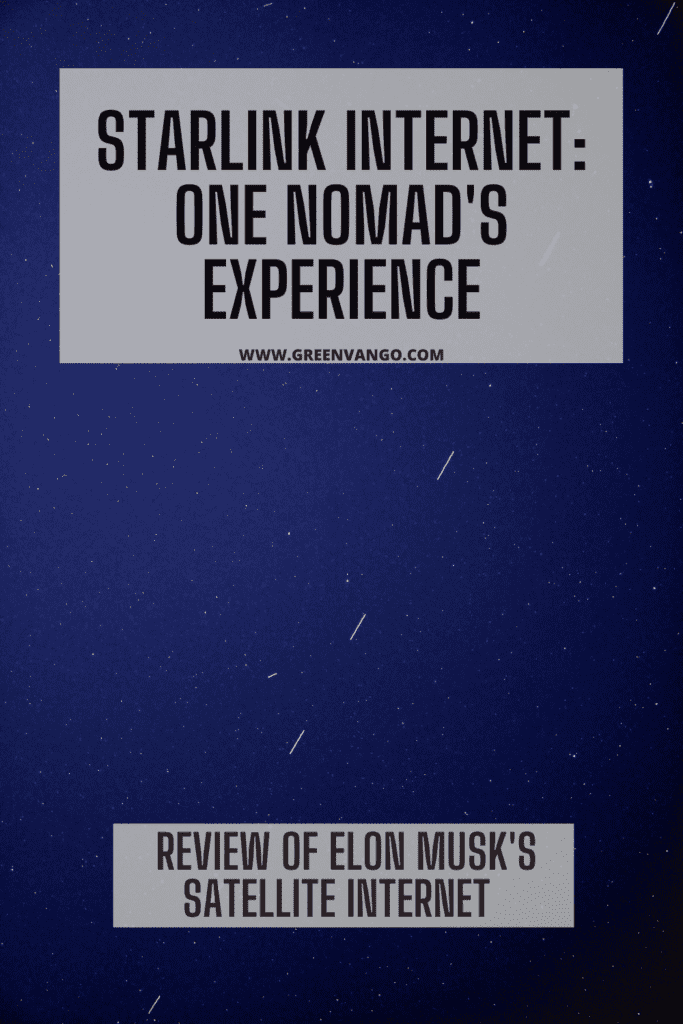

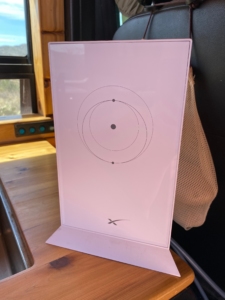 The dish and router pulls about 5amps of power consistently. That’s a lot for a consistent draw. I’ve noticed a difference in my battery recharge/use rate, so be sure to monitor usage and learn what the additional power use means to your specific setup.
The dish and router pulls about 5amps of power consistently. That’s a lot for a consistent draw. I’ve noticed a difference in my battery recharge/use rate, so be sure to monitor usage and learn what the additional power use means to your specific setup.
1 Comment
Austin
5 amps doesn’t tell us how much power is actually used by the unit. It’s only telling us about the current, that is, how much of a charge is passing through the wire. If the unit uses 2 volts, that’s 10 watts of power or energy consumed per hour: really not much power and not much drain even on small batteries. So for everyone else, my understanding is that these things use about 75 W/hr on average.